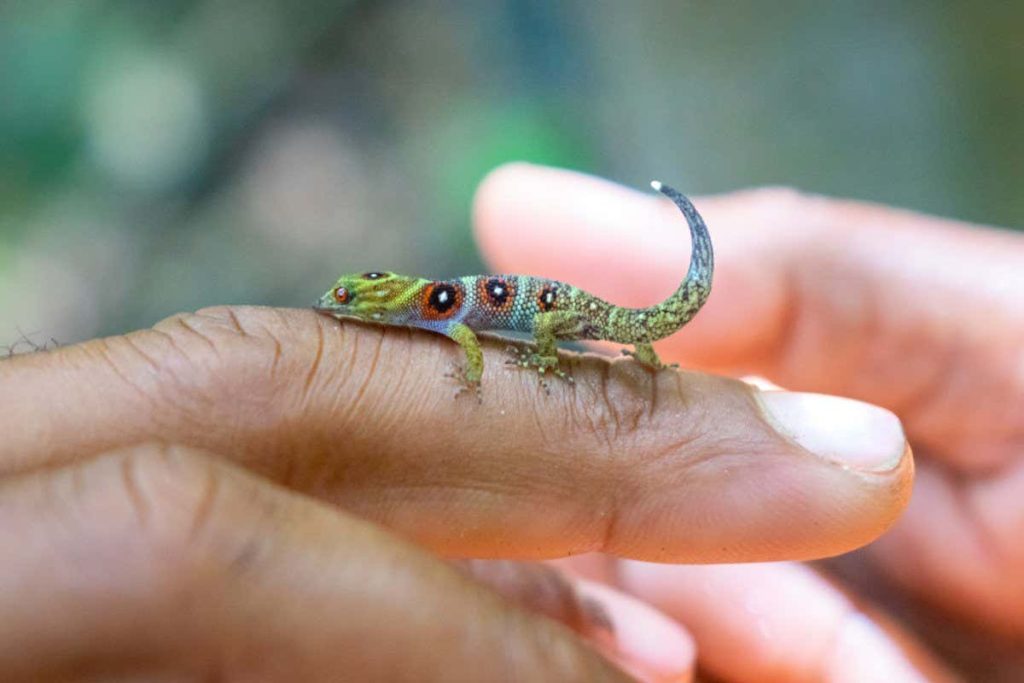The population of Union Island geckos plummeted due to growing demand from the illegal international pet trade, but conservationists working with locals in Saint Vincent and the Grenadines have helped boost its numbers
Life 30 November 2022
The Union Island gecko (Gonatodes daudini) is small but beautiful
Jacob Bock/ Fauna and Flora International
A species of critically endangered gecko, which is brightly coloured and the size of a paper clip, has nearly doubled in number since 2018, thanks to conservation efforts in collaboration with local residents.
The Union Island gecko (Gonatodes daudini) is found in Chatham Bay forest on the island of the same name in Saint Vincent and the Grenadines. It was first scientifically described in 2005 and quickly became highly attractive for the illegal international pet trade thanks to its multicolour jewel-like markings, despite being just three centimetres long. This led to aggressive poaching and trafficking that saw the wild population fall.
The remaining reptiles live in a 50-hectare patch of ancient forest, making them especially vulnerable to human activity. So in 2016, the Saint Vincent and the Grenadines Forest Department and conservation organisations worked with local residents to devise a species recovery plan.
Advertisement
These conservation efforts ranged from the expansion and increased management of protected areas to anti-poaching patrols and round-the-clock camera surveillance by community wardens in the forest. As a result, Union Island gecko numbers have increased from 10,000 in 2018 to 18,000 today.
“As a Unionite and a community leader, I am extremely proud to be a part of this success story,” said Roseman Adams, co-founder of the local Union Island Environmental Alliance, in a statement.
“Saving the Union Island gecko in the wild has been a collaborative effort,” says Jenny Daltry of Fauna and Flora International and Re:wild, two international conservation charities that were part of the work. “The people of Union Island are amazing to work with, and rightly very proud of their unique gecko and their ancient forest.”
The success in protecting the gecko has led the conservation groups to develop a wider initiative that aims to protect other wildlife in Chatham Bay forest, providing sustainable employment and development opportunities for the local community in the process. “Though small, it is chock-full with endangered and endemic animals and plants, and new species are still being uncovered,” says Daltry.
Sign up to Wild Wild Life, a free monthly newsletter celebrating the diversity and science of animals, plants and Earth’s other weird and wonderful inhabitants
More on these topics:

